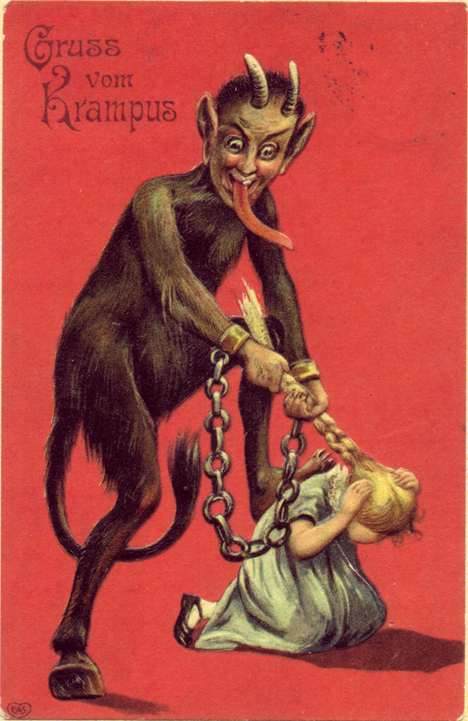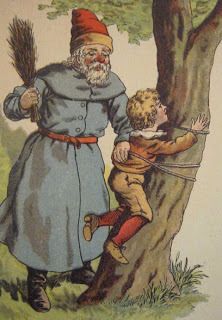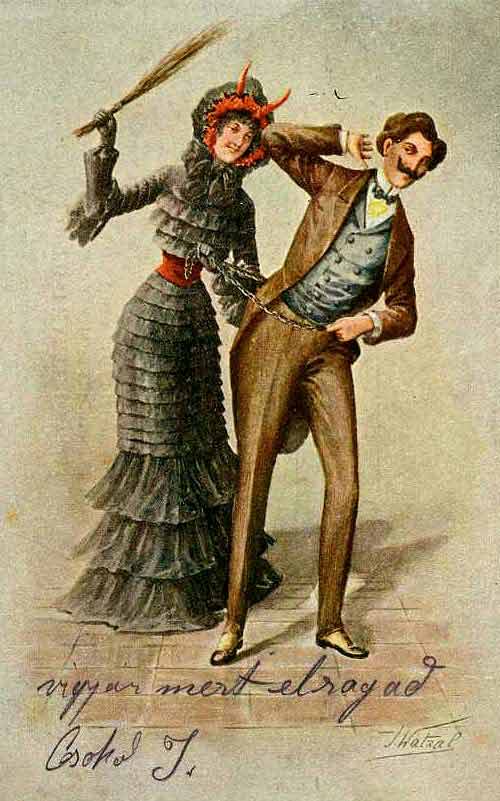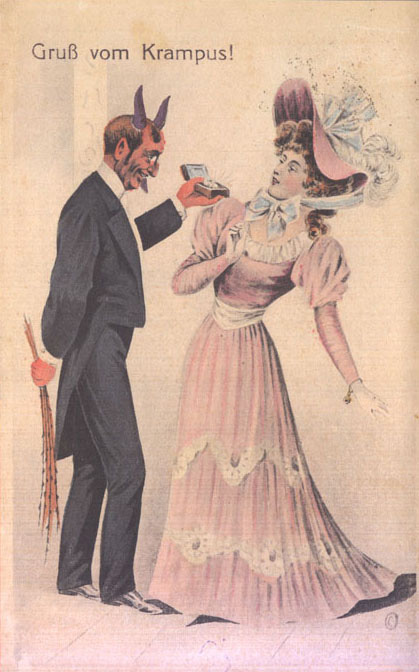Ancient Psychedelia: Alien Gods & Mushroom Goddesses
Online Book - Chapter 21, Page 423
Back to Online Book Mainpage / Next Page (Chapter 21, Page 424)
| Santa himself is clad in red and gold or red and white, the colors of the mushroom, and the same colors as our Christian saints and cardinals, Saint Nicholas among them, whose background has recently converged with the shamanic Siberian Santa Claus. Another visual progenitor of our modern Santa, Krampus, is depicted as a rather devilish looking character. “Santa,” being cognate with “Saint,” of Saint Nick, can also be an anagram of “Satan.” In Germany, the original Father Christmas was Thor or Donner who wore red and rode in a Golden Chariot pulled by two goats, Cracker and Gnasher, predecessors to our beloved Rudolph. Even the terminology and root words Christ-Mass imply the eating of a sacramental meal. There is also the story of Pelznickel, or Belsnickel, or Kriskinkle, the German Santa Clause. His name means “pelt-Nicholas” or “fur-Nicholas.” He is found in Brown’s Miscellaneous Writings from 1830. An account of this character is portrayed as a “Christmas Woman” and she carries gifts and a long hazel switch. She releases the gifts, the children all clamor for them and she stings them, or at least the naughty ones, as they grab the presents. This figure is generally depicted as fur-clad, disheveled, dirty clothes with lots of cakes, sweets and little gifts for children brimming out of his or her pockets. (43) Today, this person would be branded a pedophile, locked away and barred from all parks and school zones. In early Pennsylvania traditions imported from Germany, Krishkinkle is the good Santa who rewards children when they are good and Pelsnichol is the nasty Santa who punished children who have been bad. Pelsnichol merely leaves a birch rod in the stockings of naughty children. (44) In one early image, which I am not aware of the source, Pelsnickol is featured similar looking to Santa wearing a distinctive “Red Cap” and using a twig bunch as a whip, with a little boy helplessly tied to a tree. If I was a little child in the early 19th century under the Catholic Church’s rule with no mercy for sin, I don’t know if I would have been afraid to commit sins or more tempted to commit them. This is vintage BDSM softporn, and I’m not sure it would have really scared too many kids more than it would have encouraged them. Pelsnickol was obviously an invention by the Church to syncretize old shamanic traditions with new world Catholic morals. In some parts of Europe, the Feast of St. Nicholas is celebrated on December 6th. The preceding evening, December 5th is Krampus Night or Krampusnacht. (45) He goes from home to home, sometimes with Saint Nicholas, sometimes by himself, and he fills naughty children’s stockings with coal and the Ruten bundles. (46) Krampus is a much nastier character than Pelsnickol and is usually give the appearance of the devil. He is either shoving children into a basket or carrying them off in a pouch on his back. He is also shown as having one human foot and one cloven hoof. Sometimes Krampus is given sexual overtones, pictured pursuing women. (47) In parts of Croatia he is such a terrible monster, he is known to actually take the presents away from bad children. Both Pelsnichol and Krampus have been given devilish overtones, and also the dark-side of the mushroom, in a sense, while good Saint Nicholas has retained the light-side of the mushroom. The fact that he is made like the devil, given goat features and also that he has one leg human and one goat, is another indicator of his mushroom affinity. (48) |
    Vintage Christmas Post Cards > (43) Jacob Brown, Brown's Miscellaneous Writings, Printed by J.J. Miller (Cumberland, Maryland 1896), page 41 (44) 'Notes and Queries', volume 8 (217), 24 December 1853, p.615 The article is signed 'Uneda', one of the pen-names used by contributor William Duane (1808-1882) of Philadelphia (45) Bruce, Maurice (March 1958). "The Krampus in Styria". Folklore. 69 (1): 44–47 (46) Siefker, Phyllis (1997). Santa Claus, last of the Wild Men: the origins and evolution of Saint Nicholas. Jefferson, North Carolina: McFarland and Co. pp. 155–159 (47) Beauchamp, Monte (2004). The Devil in Design: The Krampus Postcards. Seattle, Washington: Fantagraphics. pp. 14–29, 32 (48) Hidden World, p. 113-14 |
Go Back to Page 422